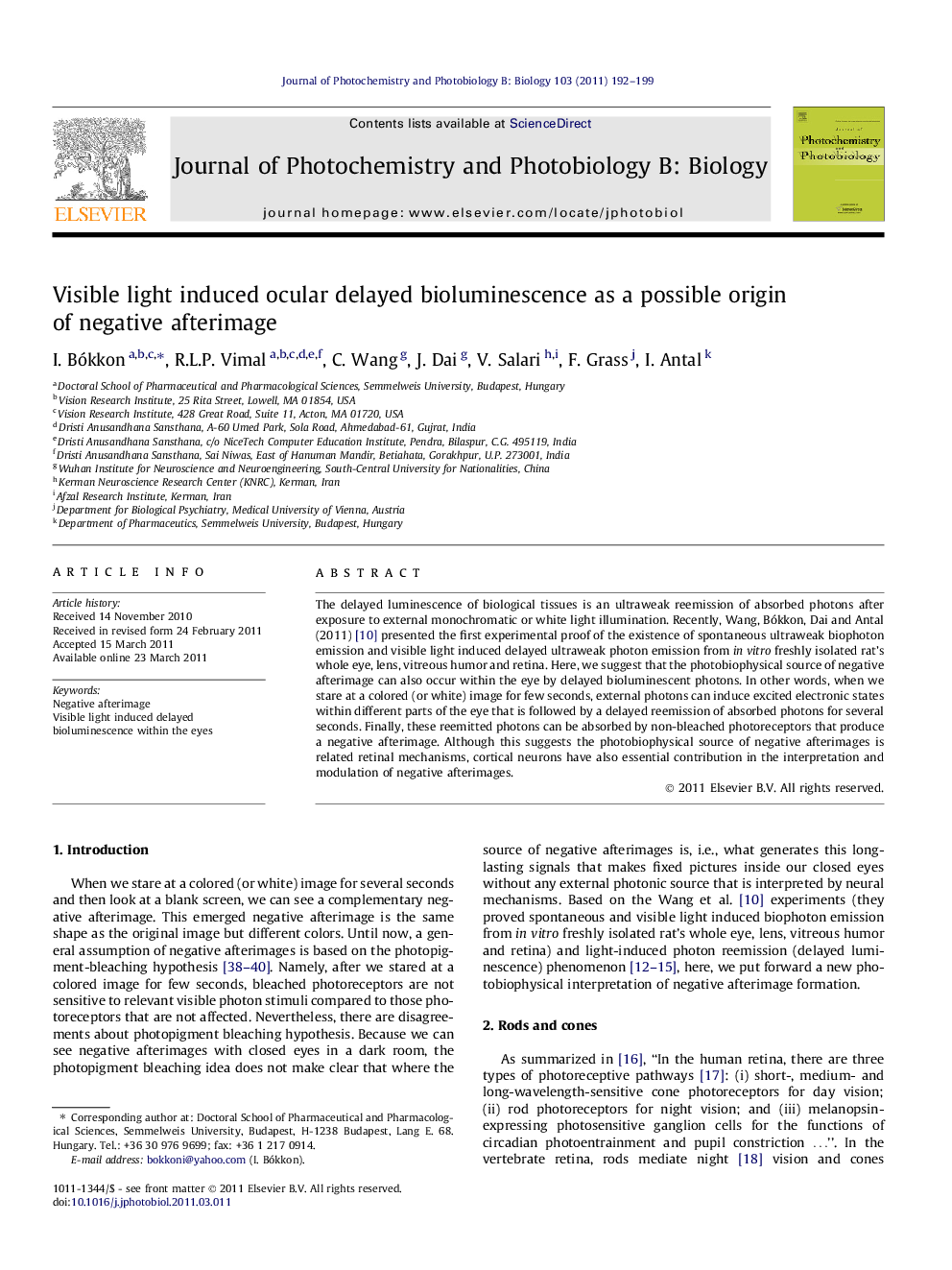| Article ID | Journal | Published Year | Pages | File Type |
|---|---|---|---|---|
| 29752 | Journal of Photochemistry and Photobiology B: Biology | 2011 | 8 Pages |
The delayed luminescence of biological tissues is an ultraweak reemission of absorbed photons after exposure to external monochromatic or white light illumination. Recently, Wang, Bókkon, Dai and Antal (2011) [10] presented the first experimental proof of the existence of spontaneous ultraweak biophoton emission and visible light induced delayed ultraweak photon emission from in vitro freshly isolated rat’s whole eye, lens, vitreous humor and retina. Here, we suggest that the photobiophysical source of negative afterimage can also occur within the eye by delayed bioluminescent photons. In other words, when we stare at a colored (or white) image for few seconds, external photons can induce excited electronic states within different parts of the eye that is followed by a delayed reemission of absorbed photons for several seconds. Finally, these reemitted photons can be absorbed by non-bleached photoreceptors that produce a negative afterimage. Although this suggests the photobiophysical source of negative afterimages is related retinal mechanisms, cortical neurons have also essential contribution in the interpretation and modulation of negative afterimages.
► The delayed luminescence of cells is a reemission of absorbed photons after exposure to visible light. ► We suggest that the source of negative afterimage can occur in the eye by delayed photons. ► These reemitted photons are absorbed by non-bleached photoreceptors that produce a negative afterimage. ► The negative afterimage is interpreted by higher neural mechanisms. ►During vision, the delayed photons in the eyes should be considered in vision research.
